#paul noonan
Explore tagged Tumblr posts
Text
youtube
ANOTHER LOVE - Gemma Hayes (ft. Paul Noonan)
18 notes
·
View notes
Video
youtube
Summer's End - Paul Noonan, Lisa Hannigan & Gemma Hayes
John Prine cover performed live 2023
3 notes
·
View notes
Text

Paul Gilbert-Mamie Van Doren "3 nuts in search of a bolt" 1964, de Tommy Noonan.
4 notes
·
View notes
Text
Will you be my sweet pea……… will you be the card up my sleeve………………
4 notes
·
View notes
Text

Bad movie I have Beast from Haunted Cave 1959 and Ski Troop Attack 1960
#Beast from Haunted Cave#Michael Forest#Sheila Noonan#Frank Wolff#Wally Campo#Richard Sinatra#Linné Ahlstrand#Chris Robinson#Kay Jennings#Jaclyn Hellman#Kinta Zertuche#Ski Troop Attack#James Hoffman#Chan Biggs#Tom Staley#Roger Corman#David Mackie#Skeeter Bayer#Wayne Lasher#Paul Rapp
2 notes
·
View notes
Text

Storia Di Musica #374 - Damien Rice, O, 2002
I dischi di Maggio avranno questa caratteristica: avranno il titolo di una sola lettera. Ho pensato a questa caratteristica come risposta "immunitaria" al profluvio di cose che negli ultimi 10 giorni di Aprile, visti gli avvenimenti storici, si sono riversati nell'atmosfera. ne è uscita una lista niente male che si scoprirà, se vorrete, in questo mese di Maggio.
Si inizia con una storia che è diventata nel corso degli anni emblematica, che riguarda un musicista e cantante irlandese. Che aveva in mente di seguire le proprie idee nella produzione artistica, senza nessun compromesso. Sembra un progetto irrealizzabile. Eppure Damien Rice nel corso di tutta la sua carriera ha sempre perseguito questo obiettivo. Inizia giovanissimo ad avere successo con i Juniper di Paul Noonan, ma lascia la band subito prima che la stessa firmi un contratto con un major discografica, la Polygram: Noonan cambierà il nome dei Juniper in Bell X1 ed avrà un discreto successo. Rice inizia un viaggio per tutta l’Europa, venendo anche spesso in Italia, dove per mesi lavora in una fattoria della Toscana. Inizia qui un percorso di "autoanalisi", come se iniziasse a farsi un ritratto vedendosi con gli occhi di un altro: gli basta una chitarra per intraprendere un viaggio profondissimo e doloroso tra i suoi sentimenti, gli amori finiti, i dubbi, ma anche la felicità degli incontri, delle emozioni. Qualche volta si trasforma in busker, in suonatore di strada, e nei piccoli borghi attorno a quella fattoria toscana canta quelle canzoni: visto quello che succederà dopo quelle esibizioni si ammantano di aura leggendaria. Torna nella sua Dublino pieno di idee e di canzoni. Registra personalmente un demo che manda al produttore di Bjork, David Arnold, famoso anche per le colonne sonore dei film di James Bond, che rimane folgorato. In accordo con i dettami di Rice, raccoglie fondi necessari per un piccolo studio mobile, e lascia carta bianca a Rice di fare quello che vuole.
O esce nel 2002 in Gran Bretagna ed Irlanda, e nel 2003 in Europa e negli Stati Uniti. Ed è un colpo al cuore. La voce calda e stupenda di Rice, aiutata in questo dal suo alter ego femminile, Lisa Margaret Hannigan, melodiosa e struggente, stupisce nelle stupende canzoni dell’album. O è un riferimento alla protagonista del romanzo erotico Historie d’O, uscito nel 1954 scritto da Dominique Aury con lo pseudonimo di Pauline Reage, divenuto anche film scandalo nel 1975 con Udo Kier e Corinne Clery. Il libro è citato in una delle canzoni più famose, Amie. L’album non ha punti deboli e con l’aiuto di Vyvienne Long (violoncello), Shane Fitzsimons (basso), Mark Kelly ( chitarra elettrica), Tom Osander (percussioni, batteria) possiede un’atmosfera acustica e piena, viva e mai piatta, con ricordi di Nick Drake e la famiglia Buckley (soprattutto il padre). Delicate apre il disco, e già mette alla luce il duetto di voci, la scrittura felicissima e quel senso di languida malinconia che è spesso così attrattivo. Volcano diviene una hit, come Cannonball (che come singolo aveva un arrangiamento diverso da quello del disco). Cold Water è bellissima, ed usata, come molte altre canzoni del disco, in serie Tv e film (basta citare House M.D., C.S.I. Miami, Dawson’s Creek, E.R., The O.C., Lost ed nel film di Mike Nichols Closer del 2004). Eskimo dura 16 minuti per la presenza di due ghost track e una Silent Night da brividi cantata dalla Hannigan. Ogni canzone è un brivido: Older Chests, con il suo andamento quasi come un respiro emozionale, il blues di Cheers' Darling, la voce come un soffio di Lisa Hanningan, conosciuta all'università e per anni sua sodale artistica, nella prima parte di I Remember, meravigliosa elegia di un amore difficile con finale pazzesco (And I wanna hear what you have to say about me/Hear if you're gonna live without me/I wanna hear what you want/What the hell do you want?). Ma la canzone più bella e famosa (anch’essa utilizzata in film e telefilm, anche ne Il Caimano di Nanni Moretti) è The Blower’s Daughter, una preghiera in crescendo, una sensazionale canzone di amore e disperazione, che mette davvero i brividi. Stupisce come l'intimità di tutte queste emozioni non sia frutto di un minimalismo di facciata ma di una costruzione a piccoli pezzi di tocchi musicali. Tra l'altro diventerà il successo che è ancora oggi nella preistoria di Internet e dello streaming, con un passaparola incessante e mi permetto di dire "fisico" che andrà avanti per anni: venderà milioni di copie in tutto il mondo, e l'uso intensivo di queste canzoni meravigliose in serie Tv, cinema e altro non farà altro che mantenere alto il ricordo di questo bellissimo disco (per citare uno degli ultimi esempi, ne La Casa Di Carta).
Rice riuscì quasi a ripetere la stessa magia di O in 9 del 2006 (che contiene un gioielli come Grey Room e 9 Crimes cantata in coppia con Lisa Hanningan), non riuscirà a ripetere l'emozione di O nonostante abbia mantenuto un seguito niente male. L'ultimo suo disco è del 2014, My Favourite Faded Fantasy, prodotto nientemeno che da Rick Rubin, che è molto molto interessante. Da allora continua però a suonare dal vivo e a regalare, ogni tanto, perle del suo talento interpretativo, come una cover di One degli U2 nell’album AHK-toong BAY-bi Covered pubblicato nel 2011 dalla rivista Q per il ventennale di quel capolavoro assoluto che fu Achtung Baby. Artista sorprendente ed integro, e di questi tempi non è male.
31 notes
·
View notes
Text
[Mixtape] She, Rogue
Folk + Blues + change. I'm not repeating the classics "Female Smuggler" and "Sovay (Female Highwayman)", you can find these in ye olde Outlaw Ballads mixtape, but I do have a "Female Transport" here. Also pickpockets, moonshiners, pirates, robbers, vagabonds, jailbirds, thieves, and murderers. Enjoy!
Calexico - Ballad of Cable Hogue
La Caravane Passe - Maria Kalash
Lee Hazlewood with Duane Eddy & His Orchestra - The Girl On Death Row
Pati Amor & Pshycotic Beats - Killer Shangri-Lah
Nick Cave - The Ballad Of Renegade Nell
Katie Noonan - Female Transport
Nick Cave & The Bad Seeds feat. PJ Harvey - Henry Lee
Ewan MacColl - Minorie
Stan Rogers - The Maid On The Shore
Shannon - Bedlam Boys
Rhiannon Giddens - Moonshiner's Daughter
American Murder Song - Pretty Lavinia
Paul Shapera - The Thief
Paul Shapera - The Heist
John Kander - Cell Block Tango
Cab Calloway - Minnie The Moocher
Bessie Smith - Pickpocket Blues
Bessie Smith - Sing Sing Prison Blues
Nina Simone - Pirate Jenny
@tuulikki
18 notes
·
View notes
Text
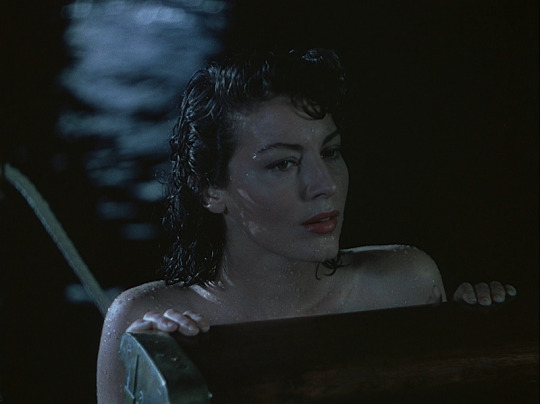
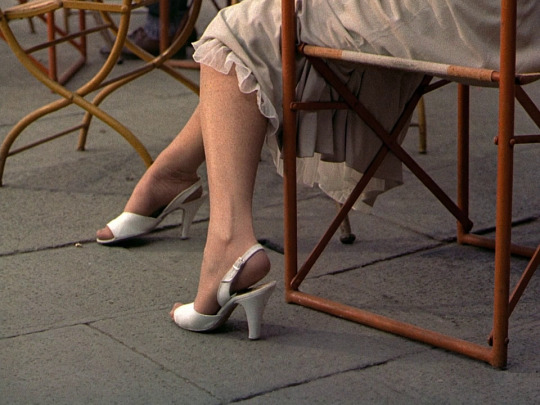


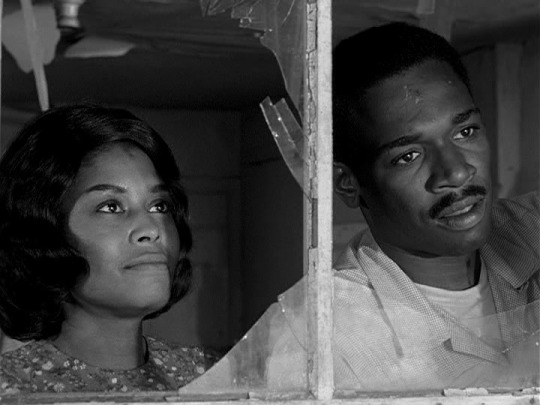
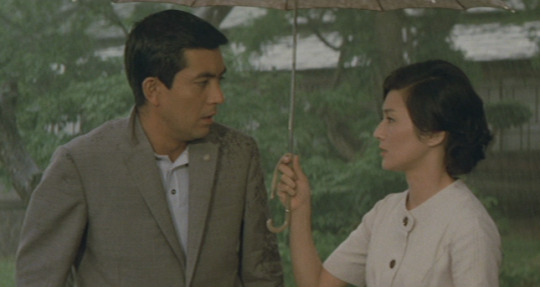
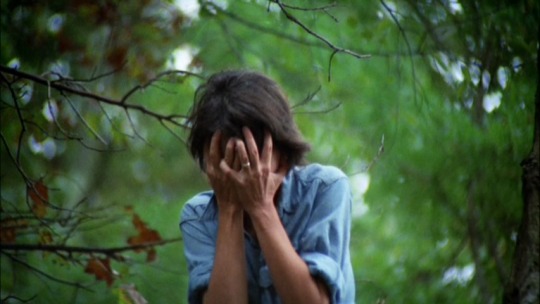
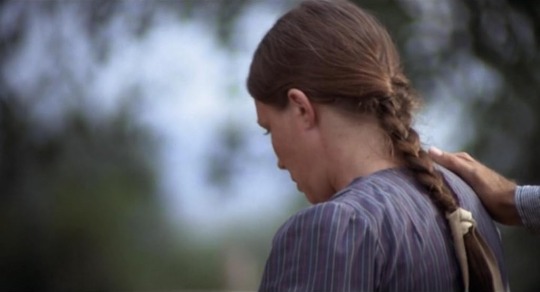
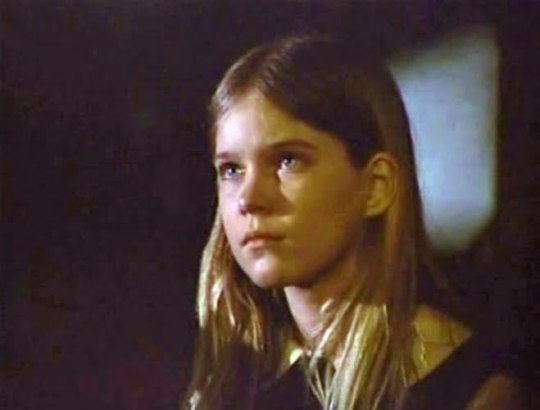


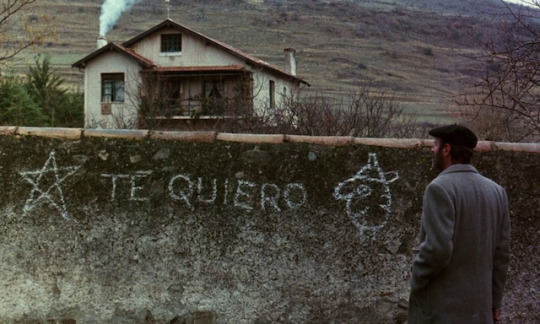
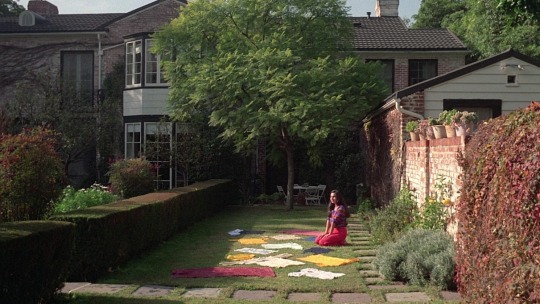
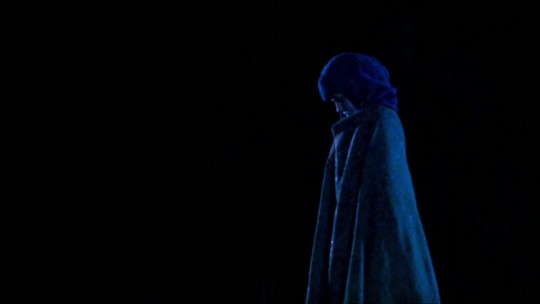
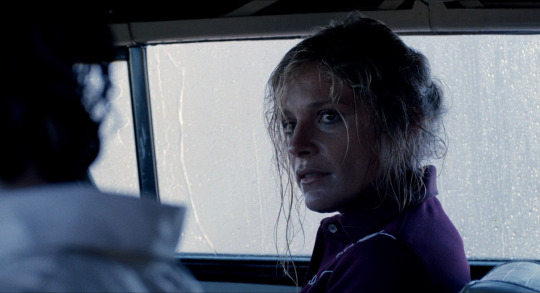
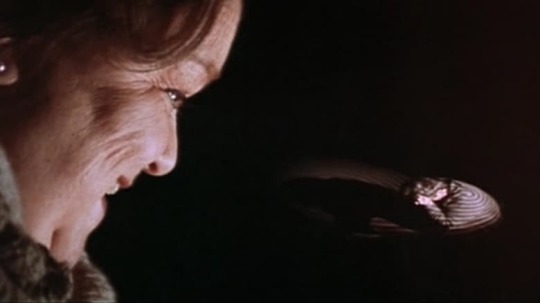

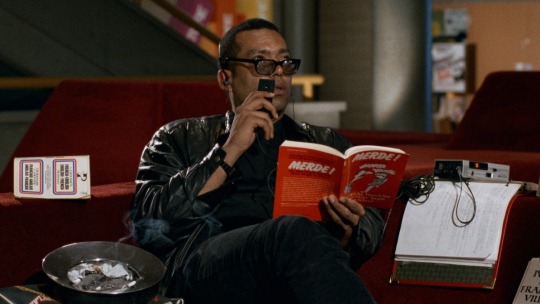


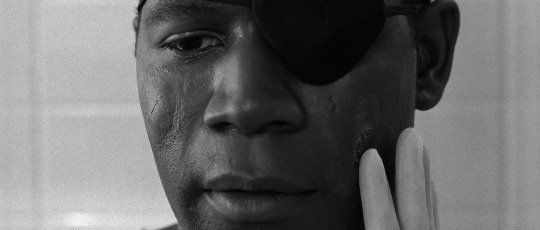

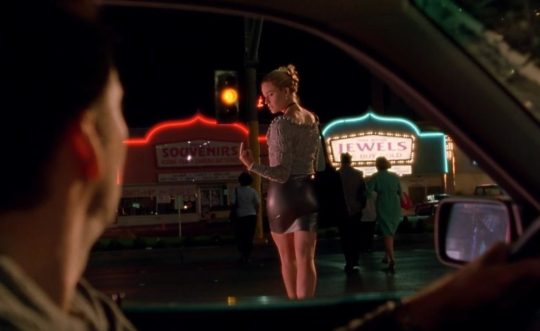

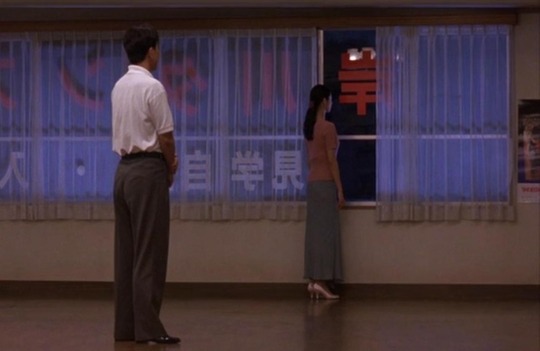
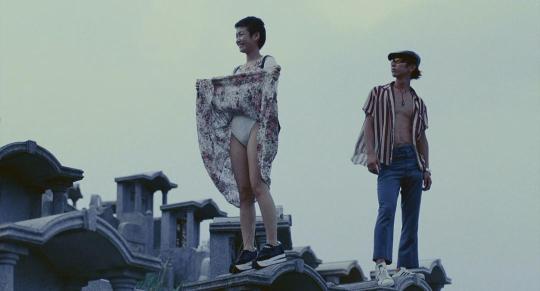


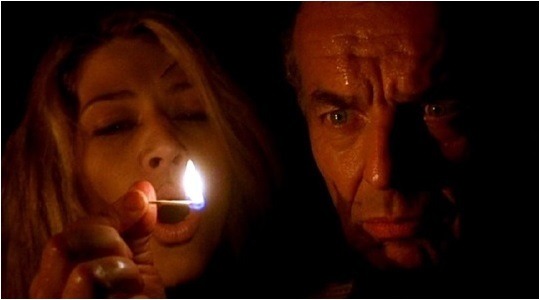

Top 30 Movies that I discovered in 2023 (but not released in 2023) :
Pandora and The Flying Dutchman (Albert Lewin, UK, 1951)
Summertime (David Lean, USA/UK, 1955)
Tea and Sympathy (Vincente Minnelli, USA, 1956)
Murder by Contract (Irving Lerner, USA, 1958)
Nothing But a Man (Michael Roemer, USA, 1964)
Scattered Clouds (Mikio Naruse, Japan, 1967)
Let’s Scare Jessica to Death (John D. Hancock, USA, 1971)
The Hired Hand (Peter Fonda, USA, 1971)
The effect of Gamma rays on man-in-the-moon marigolds (Paul Newman, USA, 1972)
Chilly Scenes of Winter (Joan Micklin Silver, USA, 1979)
Being There (Hal Ashby, USA, 1979)
El Sur (Víctor Erice, Spain, 1983)
El Norte (Gregory Nava, UK/USA, 1983)
Vigil (Vincent Ward, New Zealand, 1984)
Choose Me (Alan Rudolph, USA, 1984)
Desert Hearts (Donna Deitch, USA, 1985)
Anguish (Bigas Luna, Espagne, 1987)
The Vanishing (George Sluizer, France/Netherlands,1988)
Chameleon Street (Wendell B. Harris Jr., USA, 1989)
Proof (Jocelyn Moorhouse, Australia, 1991)
Ninja Scroll (Yoshiaki Kawajiri, Japan, 1993)
Suture (Scott McGehee & David Siegel, USA, 1993)
What Happened Was... (Tom Noonan, USA, 1994)
Leaving Las Vegas (Mike Figgis, USA, 1995)
August in the Water (Sogo Ishii, Japan, 1995)
Shall We Dance ? (Masayuki Suo, Japan, 1996)
Made in Hong Kong (Fruit Chan, Hong Kong, 1997)
Bullets Over Summer (Wilson Yip, Hong-Kong, 1999)
To the Left of the Father (Luiz Fernando Carvalho, Brazil, 2001)
Dead End (Jean-Baptiste Andrea & Fabrice Capepa, France/USA, 2003)
#movies discovered in 2023#2023#cinema#top#50s#60s#70s#80s#90's#2000s#but not released in 2023#movies
45 notes
·
View notes
Text
THE WHITEWASHING OF MAMAN BRIGITTE
Why it is problematic to portray Maman Brigitte (Grann Brijitte) as a white woman
Companion piece to: https://the-girl-who-didnt-smile.tumblr.com/post/761617414938148864/baron-samedi-vs-papa-guede
Disclaimer: I have no ancestral ties to Haiti. I am half White and not Black. The following is merely an opinion piece, which I have attempted to support with evidence.
If you have ever attempted to research New Orleans Voodoo, you’ve probably encountered descriptions of Maman Brigitte like so:
In Voodoo, Ma'man Brigit (Grann Brigitte, Manman, Manman Brigit, Manman Brijit) is the mother of cemeteries, the loa of money and death, and the wife of Baron Samedi. She may be related to the "triple" Celtic goddess of poetry, smithcraft, and healing, Brigid/St. Brigit, as her name is Irish in origin. She is usually depicted as a white woman.
The above is inaccurate.
Traditionally, Haitian artists depict Maman Brigitte as a Black woman, where she is not white, biracial, or lighter skinned than Baron Samedi.
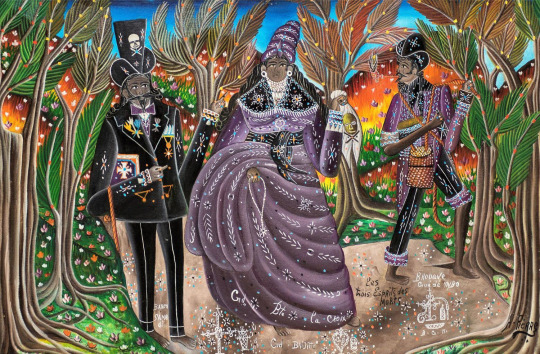
Baron Samedi, Grande Brigitte, and Guede Nibo, as portrayed by Andre Pierre.

Grann Brijitte, as portrayed by Amina Simeon.
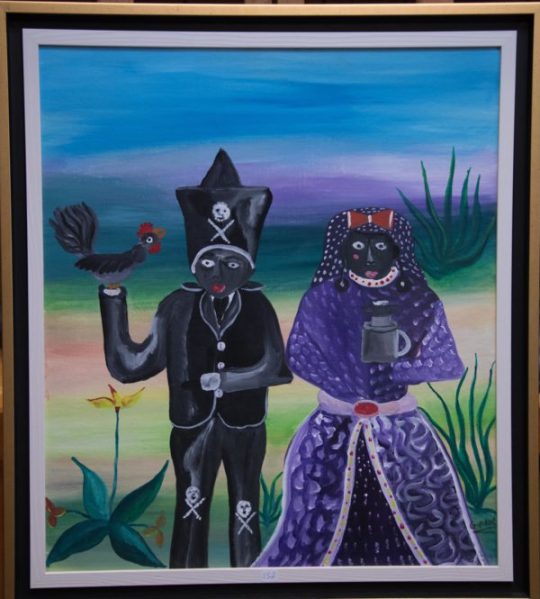
Baron Samedi and Maman Brigitte, as portrayed by Gerard Paul.

Grann Brijit, as portrayed by Roudy Azor.

Grann Brijit, as portrayed by Salnave Philippe-Auguste.
In Mythologie Vodou Vol. 2 (1950), Milo Marcelin includes a two-page description of Maman Brigitte (Grande Brijitte). The first paragraph of this section reads as follows:
Grande Brijitte, femme de Baron-Samedi et mère des Guédé, est une négresse très vieille —c’est pourquoi on l’appelle grande (grand' mère). Elle est identifiée à Sainte Brigitte, patronne de l’Irlande; elle a pour reposoir un «cirouellier» (spondias purpurea L.) ou un figuier maudit marron (clusia rosea Jacq.) et, parfois, dans les cimetières, un amoncellement de pierres la représente. Ses jours sont le lundi et vendredi, sa couleur, le noir.
English Translation:
Grande Brijitte, wife of Baron-Samedi and mother of the Gede, is a very old Black woman – this is why she is called “grande” (grandmother). She is identified with Saint Brigid, patron saint of Ireland; she has as her resting place a “cironelle” (spondias purpurea L.) or an autograph tree (clusia rosea Jacq.) and, sometimes, in the cemeteries, a pile of black stones represents her. Her days are Monday and Friday, her color, black.
The full excerpt from Mythologie Vodou, Vol. II is found on pages 177-178, and included at the bottom of this article, in APPENDIX A.
Where does the notion of a white Maman Brigitte come from?
In “Gran Brijit: Haitian Vodou Guardian of the Cemetery” (2010), Kerry Noonan proposes a theory that Gran Brijit is derived from the Irish Saint Brigitte. Initially, I described this article as a “helpful overview”; I no longer agree with this statement. While Noonan’s article does contain some helpful information, many of the connections she makes are poorly argued—including connections to Saint Brigitte, the orisa Oya, and Sheela na gig.
Noonan asserts that Maman Brigitte is identified with Saint Brigitte because of the influence of “Irish settlers and sailors and Breton priests". In one of the most objectionable sections of this article, Noonan characterizes the “Irish settlers” as “indentured servants”.
As indentured servants, Irish and Scottish people were sent to territories under the control of the British Empire. The British West Indies did not include present-day Haiti. Presumably, Noonan is referring to fugitive indentured servants, called “ingleses”. In “Irish Indentured Servants, Papists and Colonists in Spanish Colonial Puerto Rico” (2007), Jorge L. Chinea claims that “Puerto Rico, Hispaniola and Cuba became popular destinations for the fugitives.” Chinea also describes how the Spanish repeatedly denied the Irish authorization to settle in Hispaniola during the late 1600s: “In this instance, their potential infringement on the Spanish American trade in a colony already heavily involved in contraband was a major reason for turning them down.”
Nowhere does Noonan mention the influence of Irish slave owners.
"The many Haitians and West Indians who trace their ancestry back to Africans transported on Irish-owned slave ships are living proof that the Irish have not always been the victims of history."
– Joe O’Shea (2012) “The Irish have not always been the victims of history”:
In “Irishness, Whiteness, Blackness, and Slavery in the Early Modern World” (2022), Jane Ohlmeyer describes how the Irish contributed to “one of the harshest systems of servitude in western history” during the 18th century:
“Of the 550 families involved in the French slave trade, seventeen had Irish surnames. One of the most successful Irish slavers was Antoine Walsh, the son of an Irish merchant who had settled in France in the later seventeenth century and married Marie O’Sheil/Shiell, whose grandfather had settled in France. Over the course of his career Walsh made forty slaving trips from Nantes and shipped more than 12,000 enslaved Africans. With his profits Walsh purchased a plantation for himself in the French colony of Saint-Domingue (modern day Haiti), which supplied up to seventy percent of all of the sugar sent to France.”
It may be due to the presence of these slave owners that Haitian women with the name “Brigitte” appear in the historical record.
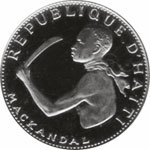
Pictured: François Mackandal, whose wife was named Brigitte
Rather than Saint Brigitte or the Celtic goddess Brigid, a likelier candidate for the origin of Maman Brigitte is the wife of the famous Haitian maroon leader François Mackandal, who was named Brigitte Mackandal.
This theory was proposed by Crystal Nicole Eddins’ (2022) Rituals, Runaways, and the Haitian Revolution:
“Mackandal’s wife, Brigitte, may have transitioned into the world of the lwa as Maman Brigitte, who has authority over cemeteries.” (p. 122)
SOURCE: Eddins, Crystal Nicole. Rituals, Runaways, and the Haitian Revolution: Collective Action in the African Diaspora. United Kingdom, Cambridge University Press, 2022. https://doi.org/10.1017/9781009256148 Retrieved from: https://www.cambridge.org/core/books/rituals-runaways-and-the-haitian-revolution/2FCBF92A767FD8DE3615602F589C326E#overview
John D. Garrigus mentions Brigitte Mackandal in A Secret among the Blacks (2023), describing her in the following terms:
“...Brigitte, described as Makandal’s wife and a ritual leader in her own right, claimed that a makandal bundle “consulted by its servant” could reveal the location of “an escaped slave, who had stolen something that was missing, the poisoner, and other [things]...” (p. 78)
SOURCE: Garrigus, John D.. A Secret Among the Blacks: Slave Resistance Before the Haitian Revolution. United States, Harvard University Press, 2023. https://www.hup.harvard.edu/books/9780674272828
Garrigus refers to three primary sources that mention Brigitte Mackandal:
1. Sébastien Jacques Courtin’s (1758) “Mémoire Sommaire Sur Les Prétendus Pratiques Magiques et Empoisonnements…”
2. Charles Fournier de la Chapelle (1758) “Mémoire pour servir à l’information des procés contre les négres devins, sorciers et empoisonneurs”
3. Michel-René Hilliard d’Auberteuil, “Considérations sur l’état présent de la colonie française de Saint-Domingue” (Paris: Grangé, 1776), 1:137.
I have attempted to transcribe excerpts from these historical texts, which can be viewed here: https://archiveofourown.org/works/54861145/chapters/156619222
Commenting further on Brigitte Mackandal, Eddins writes:
“Women like Brigitte Mackandal and Marie Catherine Kingué demonstrated the “radical implications of black women’s spiritual politics” by embracing acts of “woman-centered preservation,” such as poison, healing, and midwifery, that fundamentally opposed racial capitalist exploitation of black women’s bodies.” (p. 144)
SOURCE: Eddins, Crystal Nicole. Rituals, Runaways, and the Haitian Revolution: Collective Action in the African Diaspora. United Kingdom, Cambridge University Press, 2022. https://doi.org/10.1017/9781009256148 Retrieved from: https://www.cambridge.org/core/books/rituals-runaways-and-the-haitian-revolution/2FCBF92A767FD8DE3615602F589C326E#overview
Even if there is no connection between Maman Brigitte and Brigitte Mackandal, these documents demonstrate that there existed Haitian women from this time period with the name “Brigitte”. These women might have been named after Saint Brigitte because there were a number of slave owners of Irish descent, such as Antoine Walsh, and possibly from the Celtic province of France (Brittany). The Gede rite, to which Maman Brigitte belongs, contains the spirits of Haitian ancestors. This would explain why Maman Brigitte is not a white woman, but an old Black woman–she is an important ancestral spirit of a Haitian woman named “Brigitte” who lived several hundred years ago.
Of the Haitian women named “Brigitte”, Brigitte Mackandal is a strong candidate due to her leadership role and historical importance. François Mackandal is a very important figure from Haitian history, described as the precursor to the Haitian Revolution. As Brigitte Mackandal seems to have also been a leader among the slaves, it is plausible that her spirit became the lwa Maman Brigitte.
In Haitian Vodou, Catholic Saints can come to be identified with important ancestral spirits, like so:
“KB: Tell me everyone who "walks with Dantò," everyone who you have here on your altar with Dantò.”
“ML: You have St. Rose of Lima; she is a Petwo. You have St. Philomène. She is Petwo. She is a lwa too, Manbo Philomise. You see St. Andrew? You see Sacred Heart–who walks with Simbi? And then you have St. Jude. He is a Legba Petwo, too.”
“Spirits who have been important to one of the ancestors occupy a dual role in Vodou, one in which they are treated as both spirits and ancestors. So when Mama Lola serves St. Philomène, she also honors the spirit of her mother, Philomise, a well-known healer in Port-au-Prince. It is because of this that the altars can be seen as repositories of family history, or, more literally, as repositories of the family itself.”
SOURCE: Lola, Mama & Brown, Karen McCarthy. "The Altar Room: A Dialogue." In Cosentino, Donald. Sacred Arts of Haitian Vodou. United States, UCLA Fowler Museum of Cultural History, 1995. p. 229-230. Retrieved from: https://archive.org/details/sacredartsofhait0000unse/page/228/mode/2up?
Maman Brigitte probably came to be identified with Saint Brigitte because of the Breton priests that were sent to Catholicize Haiti.
In “Rev. John J. Burke, the National Catholic Welfare Conference, and the American Occupation of Haiti” (2014) Donald J. Slawson describes how Roman Catholicism was brought to Haiti:
“The concordat between the Vatican and Haiti dated to 1860. From the time of Haitian independence in 1804 until that year, the condition of the Catholic Church in that country was deplorable…As early as 1834, Rome and Port-au-Prince had entered into negotiations to regularize the status of the Church in Haiti. President Fabre Geffrard finally achieved that goal…Given the nation’s colonial and cultural ties with France, the bishops and clergy came from Brittany.”
Noonan describes the importance of Saint Brigid to Breton priests: "Catholics in both Ireland and Brittany are devoted to the Irish St. Brigit of Kildare, and many churches are dedicated to her in both areas."
According to Sidney Mintz & Michel-Rolph Trouillot's "The Social History of Haitian Vodou", many features of modern Vodou took shape in the century that followed the Haitian Revolution. During this time period, Roman Catholics were sent to Haiti for the purpose of religious imperialism. They were openly hostile toward vodouisants, and sought to destroy African-based traditions.
This attitude persisted into the 20th century, as described by Melville Herskovits in Life in a Haitian valley (1964):
“The attitude of the Church toward vodun is one of intransigent hostility. The anger with which the priest preached his sermon on the Sunday morning following a vodun dance held close enough to town so that the sound of the drums, plainly audible, "disturbed" him the night long, clearly indicates how deeply the priests of the Church resent the worship of the African gods. In Mirebalais they tell how, at the instance of the Church, vodun rites were unmercifully suppressed by the Americans during the occupation, to whom it was represented as a potential focus for revolt. In the place huge bonfires were made of vodun drums painted and "dressed" in elaborate manner. Everything found in the humforts and the private houses of worship was confiscated, and the "thunder stones," necklaces of the devotees, and other sacred objects that would not burn were thrown into the Artibonite River. Today the Church takes full advantage of its status as the only recognized religious organization in Haiti to dictate the official position of government toward vodun.”
Long story short, it is most likely that the important ancestral lwa Maman Brigitte originates in a Haitian woman who was named “Brigitte” – possibly, Brigitte Mackandal.
The narrative that connects Maman Brigitte to indentured servants is a fiction invented by white people.

Pictured: Mambo Racine
“Maman Brigitte, the Mother of the Gedes” is a Google Groups conversation on alt.religion.orisha, dated Jun 16, 2001 - Jun 19, 2001. In this conversation, which may have only involved white people, there is an exchange between Mambo Racine and Kenaz Filan (at the time, named Kevin Filan).
The full conversation is included in APPENDIX B. The top post is the most relevant one:

Maman Brigitte is a manifestation of the Celtic Goddess Brigid. During the formative period of Haitian Vodou, many Scottish people were deported from Scotland to the Antilles because of the Stuart wars, and those Scots were the most traditionalist, the least Christianized. They were the ones who brought Brigid to Haiti.
During this time, blacks outnumbered whites about 4000 to one. This is a literal fact. So it is unlikely that those few whites could prevent Africans from having drum dances - it seems to me more likely that an uneasy truce obtained, you know, the whites said in effect, "Do your work and I will leave you alone."
At that time the whites most likely to participate in drum dances were of course the poor whites, not the few French elite whites. And among them, the most likely people to participate were the women - just the folks most likely to have preserved the service of Brigid.
(Before I go any further let me suggest that anyone who hasn't read Jayelle's "White Women in Vodou" do so!)
Now, the first woman buried in any cemetary is by definition Brigid, and the first man buried in any cemetary is by definition Baron. Of course when those drum-dancing poor Scottish women died they were buried in the same earth as Africans, and the agglomerative, pragmatic nature of Vodou as it developed would of course naturally incorporate Brigid, and metamorphose her into Maman Brigitte.
Now, to make Gede lwa, Maman Brigitte and Baron La Croix take souls from "under the water" and rebaptize them. That is why all Gede lwa have the last name La Croix, because their father is Baron La Croix. This is a real birth, out of the waters, Baron and Brigitte are not "adoptive parents", they are as much parents as any parent can be.
For more information on the travels of one Gede lwa, see "Biography of a Lwa" under the Special Topics heading on The VODOU Page. And for more information on ancestral lwa in general, see Vodou Lesson 2 under the Vodou Lesson heading on The VODOU Page.
Peace and love,
Bon Mambo Racine Sans Bout Sa Te La Daginen
"Se bon ki ra" - Good is rare Haitian Proverb
The VODOU Page - http://members.aol.com/racine125/index.html
It goes without saying, this is not well-researched.
This is how Maman Brigitte became something of a “patron saint” for white people involving themselves in Vodou, at the expense of Black women.
It feels childish that I even have to say this, but I don’t want anyone to send this woman hate. I don’t think it is fair to rake someone over the coals for saying something stupid over 20 years ago. Additionally, it would be unfair to pin the blame on this one person, as she is not necessarily the originator and it was clearly a group of people who believed this. Rather, it is important to learn from past mistakes by examining the cause and effect.
This false narrative didn’t stay confined to a small group of people. It spread into publications, which are now sitting in libraries and websites all over the internet.
Recall the description I included at the beginning:
In Voodoo, Ma'man Brigit (Grann Brigitte, Manman, Manman Brigit, Manman Brijit) is the mother of cemeteries, the loa of money and death, and the wife of Baron Samedi. She may be related to the "triple" Celtic goddess of poetry, smithcraft, and healing, Brigid/St. Brigit, as her name is Irish in origin. She is usually depicted as a white woman.
This is an excerpt from Denise Alvarado’s (2009) The Voodoo Hoodoo Spellbook. This is one of several popular books that mischaracterizes Maman Brigitte in this manner. Artists, authors, and other creators read these books, which informs their character designs.
See how Maman Brigitte is typically portrayed in popular media:



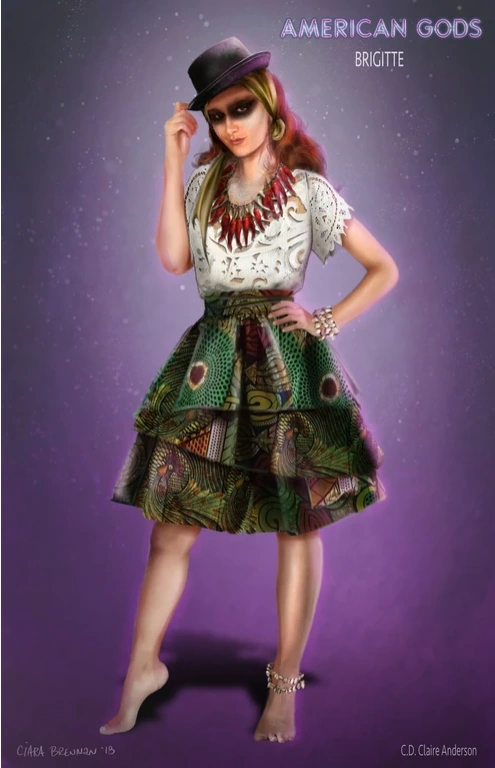
This is not the fault of this actress, at all. American Gods was actually praised for its portrayal of African spiritualities! At least, by some people… There could be intense internet discourse about how bad this portrayal was, which I am not privy to because I don’t use Twitter…
I genuinely think the creative team behind American Gods (and possibly Smite…I wouldn’t know because I don’t play…) made a serious attempt to research New Orleans Voodoo. It is not because they didn’t care or try to research this topic; rather, it speaks to how widespread and deep-rooted this problem is.
This matters because it contributes to colorism and racism against women. All across popular media, dark-skinned Black women are denigrated and erased, which impacts how people see and treat Black women in real life. Whenever they do appear, they are often stereotyped and/or excessively criticized by audiences, who can’t be normal around a “twofer minority”. This pattern has been the norm for most of human history. It went uncriticized until very recently, and continues into the present day.
More to the point, the lwa are sacred to Vodouisants of Haitian heritage. Haiti Vodou is embedded in the history of Haiti – the first nation to permanently ban slavery. This was won through a bloody Revolution, which is why the lwa are these warrior-like spirits of justice. The whitewashing of religious figures is disgraceful–especially the lwa of Haiti.
There are regional differences in Haitian Vodou, which is why accounts from different, credible sources can vary. Unfortunately, this is used as an excuse to invent falsehoods about the lwa. It is inaccurate to describe Maman Brigitte as a mere manifestation of the European saint or goddess. Instead of viewing her as European or African in origin, Maman Brigitte is best described as a lwa that is uniquely indigenous to Haiti–probably, the spirit of an important Haitian ancestor who was named “Brigitte”.
Haitian Vodou is a part of Haitian national heritage, and the lwa are ancestral to the Haitian people. We should respect the depiction of Maman Brigitte as she is portrayed by Haitians.
She is not this:

But this:
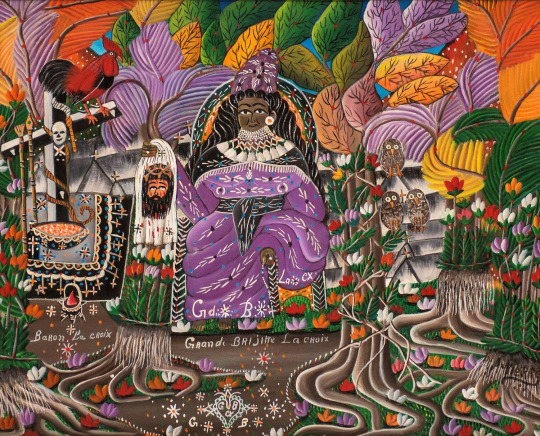
CITATION LIST:
Alvarado, Denise. Voodoo hoodoo spellbook. Weiser Books, 2011: p. 34.
Chinea, Jorge L. "Irish Indentured Servants, Papists and Colonists in Spanish Colonial Puerto Rico, ca. 1650-1800." Irish Migration Studies in Latin America 5.3 (2007): pp. 171-81. https://www.irlandeses.org/0711.pdf#page=35
Desmangles, Leslie Gerald. “African Interpretations of the Christian Cross in Vodun.” Sociological Analysis, vol. 38, no. 1, 1977, pp. 13–24. JSTOR, https://doi.org/10.2307/3709833. Accessed 9 Sept. 2024.
Hebblethwaite, Benjamin. A Transatlantic History of Haitian Vodou: Rasin Figuier, Rasin Bwa Kayiman, and the Rada and Gede Rites. United States, University Press of Mississippi, 2021. p. 204
Herskovits, Melville J.. Life in a Haitian Valley. United States, Octagon Books, 1964: pp. 289-290. https://archive.org/details/lifeinhaitianval0000hers/page/288/mode/2up
Marcelin, Milo. "Mythologie vodou (Rite Arada), Volume II." Pétionville: Éditions Canapé Vert (1950). pp. 177-178
Mintz, Sidney & Trouillot, Michel-Rolph. “The Social History of Haitian Vodou”. In Cosentino, Donald. Sacred Arts of Haitian Vodou. United States, UCLA Fowler Museum of Cultural History, 1995: pp. 123-147. https://ghettobiennale.org/files/Trouillot_Mintz_LOW.pdf
Noonan, Kerry. “Gran Brijit: Haitian Vodou Guardian of the Cemetery.” In Goddesses in World Culture: Volume 3, Australia and the Americas, edited by Patricia Monoghan, 123-133. Denver, Colorado: Praeger, 2011
Ohlmeyer, Jane. “Irishness, Whiteness, Blackness, and Slavery in the Early Modern World.” American Journal of Irish Studies, vol. 17, 2022, pp. 5–38. JSTOR, https://www.jstor.org/stable/27290673. Accessed 9 Sept. 2024.
Slawson, Douglas J. “Rev. John J. Burke, the National Catholic Welfare Conference, and the American Occupation of Haiti (1915-34).” The Catholic Historical Review, vol. 100, no. 3, 2014, pp. 514–54. JSTOR, http://www.jstor.org/stable/43898675. Accessed 9 Sept. 2024.
APPENDIX A: FULL EXCERPT FROM MILO MARCELIN’S (1950) MYTHOLOGIE VODOU VOL. 2:
GRANDE BRIJITTE
Grande Brijitte, femme de Baron-Samedi et mère des Guédé, est une négresse très vieille —c’est pourquoi on l’appelle grande (grand' mère). Elle est identifiée à Sainte Brigitte, patronne de l’Irlande; elle a pour reposoir un «cirouellier» (spondias purpurea L.) ou un figuier maudit marron (clusia rosea Jacq.) et, parfois, dans les cimetières, un amoncellement de pierres la représente. Ses jours sont le lundi et vendredi, sa couleur, le noir.
Grande Brijitte est aussi puissante que son mari. Parfois elle préside au cimetière. Si la première personne enterrée dans un cimetière nouvellement construit est un homme, on dit qu'il est Baron-Samedi et il est le maître de ce cimetière; si c’est une femme, elle est Grande Brijitte et elle est maîtresse de ce cimetière.
Les cas de possessions de Grande Brijitte sont fort rares. Quand elle possède une personne, celle-ci est comme morte. On lui bande la mâchoire avec un foulard noir, on lui met du coton aux oreilles et aux narines, on la couvre d'un drap blanc, on l'asperge de clairin (rhum blanc) et on chante:
Ou dit Manman Brijitte couché,
L’ap’ dômi!
Ou dit Manman Brijitte couché,
L’ap’ dômi!
Lô-r la réveillé,
Dèniè hounsi dô-bas!
D'leau lan gé Manman Brijitte!
Lô-r la réveillé
Dèniè hounsi dô-bas!
Tu dis que Maman Brijitte est couchée,— Et qu'elle dort! — Tu dis que Maman Brijitte est couchée, — Et qu'elle dort! — Quand elle se réveillera,— Toutes les hounsis (serviteurs du temple) seront dos bas! — Il y a de l'eau dans les yeux de Maman Brijitte! — Lors-qu’elle se réveillera, — Toutes les hounsis seront dos bas!
Grande Brijitte ne parle jamais. Quand elle se retire de son cheval (de sa possédée), on chante parfois cette chanson:
Manman Brijitte alé
Guingue, gongue!
Manman Brijitte alé
Guingue, gongue!
Manman Brijitte est partie – Guingue, gongue (tintement de la cloche: le glas funèbre!) – Maman Brijitte est partie – Guingue, gongue!
Parfois Grande Brijitte et Baron-Samedi apparaissent ensemble. On revêt ce dernier d'un linceul, on lui met aussi du coton aux oreilles et aux narines. Il s'assied sur le lit où est étendue sa femme. Lui non plus ne parle pas, ne boit pas, ne fume pas. On les veille alors, comme on fait pour les morts.
Une invocation à Grande Brijitte:
Brave, oh!
Alé rhélé Manzè Brijitte pou mouin!
M’ prall’ Thomazeau!
M’ pa gaingnin Manman,
Qui pou palé pou mouin!
M’ pa gaingnin Papa,
Qui pou palé pou mouin!
Brave, oh!
Alé rhélé Manzè Brijitte pou mouin!
M’ prall’ Thomazeau!
Brave (Guédé), oh! — Va appeler Mam'zelle Brigitte pour moi! — Je vais à Thomazeau (ville du Département de l’Ouest)! — Je n’ai pas de Maman, — Pour prendre ma défense! — Je n’ai pas de Papa, — Pour prendre ma défense! — Brave, oh!— Va chercher Mam’zelle Brijitte pour moi! — Je vais à Thomazeau!
Le menu rite du repas de Grande Brijitte est composé de patates, de bananes (plantain), du hareng-sel et de la morue boucanés, du maïs et des pistaches grillés, du gros-sirop (sirop de canne à sucre). On lui offre du clairin (rhum blanc) et en sacrifice, des poules noires.
APPENDIX B: “Maman Brigitte, the Mother of the Gedes”
Racine125
Jun 16, 2001, 4:37:00 PM
to
Maman Brigitte is a manifestation of the Celtic Goddess Brigid. During the
formative period of Haitian Vodou, many Scottish people were deported from
Scotland to the Antilles because of the Stuart wars, and those Scots were the
most traditionalist, the least Christianized. They were the ones who brought
Brigid to Haiti.
During this time, blacks outnumbered whites about 4000 to one. This is a literal fact. So it is unlikely that those few whites could prevent Africans from having drum dances - it seems to me more likely that an uneasy truce obtained, you know, the whites said in effect, "Do your work and I will leave you alone."
At that time the whites most likely to participate in drum dances were of course the poor whites, not the few French elite whites. And among them, the most likely people to participate were the women - just the folks most likely to have preserved the service of Brigid.
(Before I go any further let me suggest that anyone who hasn't read Jayelle's "White Women in Vodou" do so!)
Now, the first woman buried in any cemetary is by definition Brigid, and the first man buried in any cemetary is by definition Baron. Of course when those drum-dancing poor Scottish women died they were buried in the same earth as Africans, and the agglomerative, pragmatic nature of Vodou as it developed would of course naturally incorporate Brigid, and metamorphose her into Maman Brigitte.
Now, to make Gede lwa, Maman Brigitte and Baron La Croix take souls from "under the water" and rebaptize them. That is why all Gede lwa have the last name La Croix, because their father is Baron La Croix. This is a real birth, out of the waters, Baron and Brigitte are not "adoptive parents", they are as much parents as any parent can be.
For more information on the travels of one Gede lwa, see "Biography of a Lwa" under the Special Topics heading on The VODOU Page. And for more information on ancestral lwa in general, see Vodou Lesson 2 under the Vodou Lesson heading on The VODOU Page.
Peace and love,
Bon Mambo Racine Sans Bout Sa Te La Daginen
"Se bon ki ra" - Good is rare Haitian Proverb
The VODOU Page - http://members.aol.com/racine125/index.html
Kevin Filan
Jun 17, 2001, 3:43:50 PM
to
Thanks for a fascinating essay on Maman Brigitte. While I can't comment
on her place in Haitian Vodou, I do have some knowledge of Scots and
British history, as well as a bit of experience doing scholarly
research. While I think you make a couple of questionable assertions,
you also have raised some interesting points.
Racine125 wrote: > > Maman Brigitte is a manifestation of the Celtic Goddess Brigid. During the > formative period of Haitian Vodou, many Scottish people were deported from > Scotland to the Antilles because of the Stuart wars, and those Scots were the > most traditionalist, the least Christianized. They were the ones who brought > Brigid to Haiti.
http://www.learner.org/biographyofamerica/prog13/feature/index_text.html
Tells us the first African slaves in the New World arrived in Hispaniola in 1501... and the first slave rebellion in Hispaniola was in 1522. By that time Scotland had been Christian for over a thousand years. While Neopagans love to speculate about isolated villages practicing "the Olde Pagan Customs" well into the 20th century, I've yet to see any evidence of same. I certainly doubt VERY strongly that there were any Scotsmen of that time, no matter how isolated a little town they came from, who would have considered themselves "Brigid worshippers." I'm even inclined to think that by the time of the Stuart Wars poor White indentured servants were largely becoming a thing of the past, as the Slave routes became well-established and the full horror of that machinery was coming into operation. There were certainly Catholic Scots who got the heck outta Dodge during the Stuart Wars: many of them wound up in Catholic France or some of the French colonies. But I'm not sure that they came to St. Dominique as indentured servants.
Here's an excerpt from http://www.scotlandspast.com/religion.htm which shows that Christianity was well established in Scotland by the 8th century: the whole site, BTW, is fascinating and well worth a read.
* * * * *
The first named missionary to Scotland is Ninian who is referred to in an aside by Bede while discussing the conversion of the Picts in his Ecclesiastical History of the English People written in 731 AD. In this aside he says 'The southern Picts, who live on this side of the mountains, are said to have abandoned the errors of idolatry long before this date and accepted the true Faith through the preaching of Bishop Ninian, a most reverend and holy man of British race, who had been regularly instructed in the mysteries of the Christian Faith in Rome. Ninian's own Episcopal see, named after Saint Martin and famous for its stately church, is now held by the English, and it is here that his body and those of many saints lie at rest. The place belongs to the province of Bernicia and is commonly known as Candida Casa, the White House, because he built the church of stone, which was unusual among the Britons.' Ninian is also dealt with in Miracula Nyniae Episcopi which also mentions a king called Tudwal, historians have used the above evidence to date Ninian to the 5th century, about the same time as Patrick. There have been many suggestions that Ninian operated much further north than Galloway and dedications to him can be found as far north as Fife and even into Angus. Although the term missionary has been used here it is likely that Christianity of some kind already existed and that Ninian, Columba and the other early saints were not missionaries in the modern sense.
* * * * * *
That being said, there certainly were indentured White servants in Haiti during the earliest days of its colonization. From http://208.154.71.60/bcom/eb/article/6/0,5716,108616+21,00.html
* * * * *
As the English, French, Dutch, and, to a lesser extent, the Danes colonized the smaller West Indian islands, these became plantation settlements, largely cultivated by blacks. Before the latter arrived in great numbers, the bulk of manual labour, especially in the English islands, was performed by poor whites. Some were indentured, or contract, servants; some were redemptioners who agreed to pay ship captains their passage fees within a stated time or be sold to bidders; others were convicts. Some were kidnapped, with the tacit approval of the English authorities, in keeping with the mercantilist policy that advocated getting rid of the unemployed and vagrants. Black slavery eventually surpassed white servitude in the West Indies.
* * * * *
By the time of the Code Noir, there was some effort made to distinguish between Blacks, mulattos, and Whites: I suspect by that time most of the ancestors of the early indentured Whites were considered mulatto at best. Some of the worst buccaneers of the time were headquartered on the Island of Tortuga, an isle populated by creoles, escaped indentured servants, escaped slaves and other "lawless riffraff." So there was definitely mingling of the races and mingling of the cultures.
> During this time, blacks outnumbered whites about 4000 to one. This is a > literal fact.
I was under the impression it was more like 20 to one, but if you could cite some source which says otherwise I'd certainly be open to correction.
> So it is unlikely that those few whites could prevent Africans > from having drum dances - it seems to me more likely that an uneasy truce > obtained, you know, the whites said in effect, "Do your work and I will leave > you alone."
It generally appears that slave owners were, if anything, *hostile* to attempts to convert their slaves. They didn't want to deal with the responsibility of teaching these savages, never mind giving them time off to go to church. While they punished anything which smacked of rebellion with truly horrendous savagery, they of course weren't able to stop every drum dance or religious service.
> At that time the whites most likely to participate in drum dances were of > course the poor whites, not the few French elite whites. And among them, the > most likely people to participate were the women - just the folks most likely > to have preserved the service of Brigid.
This involves a whole bunch of assumptions, some of which may not be true. I think the assumption that the service of Brigid was preserved is a dubious one at best. (I'm also not sure that Brigid was particularly popular in Scotland: I was of the impression that she was more favored in Ireland). And were White women regularly participating in erotically-charged (at least in the popular White imagination of the time) drumming rituals? While the Code Noir allowed intermarriage, there were certainly social taboos against this, particularly against White woman sleeping with Black men.
> (Before I go any further let me suggest that anyone who hasn't read Jayelle's > "White Women in Vodou" do so!)
An excellent and moving piece which describes what Maman Brigitte means to Jayelle and how she has integrated Maman Brigitte into her own life. I have no interest in "debunking" Jayelle's personal mythology, or in "disproving" her belief that her Maman Brigitte is related to the Celtic Brigitte. Jayelle seems like a very nice and very intelligent person: if her service of Brigitte does good things for her, then I wish her well. I can respect the opinions of a devout, sincere Moslem, without believing that the Koran is the direct word of God and that Mohammed is the seal of the prophets.
That being said: I think one of the big problems facing Neopagan theology today is flabby scholarship. "Authorities" pull assertions out of their posteriors without any kind of evidence: other "authorities" then point to these assertions as "proof." I saw a recent claim, for instance, that the "Black Madonna" found throughout Europe is really a survival of Isis and Horus worship. I didn't see any evidence backing that claim up -- just a bald-faced assertion. I could just as easily claim the Black Madonna was a survival of Parvati holding the Infant Krishna, or of the infant Guatama being held by his Mother. I'm sure that I could find a "Mother holding a Child" figure in the art of just about EVERY culture: does that prove that the Black Madonna is a survival of Inuit rule over Europe, or that Europe was once occupied by South Sea Islanders? Speculation is one thing: so long as you clearly say "This is what I believe," or "This is one possible explanation," I'm not inclined to complain. But once you and others start presenting your speculation as Historical Fact, you can run into all kinds of problems.
> Now, the first woman buried in any cemetary is by definition Brigid, and the > first man buried in any cemetary is by definition Baron. Of course when those > drum-dancing poor Scottish women died they were buried in the same earth as > Africans, and the agglomerative, pragmatic nature of Vodou as it developed > would of course naturally incorporate Brigid, and metamorphose her into Maman > Brigitte.
You're assuming a lot here again. I'm not saying that you're wrong, but I'd like to see some scholarship regarding the ethnic makeup of indentured servants in Haiti, the interactions between indentured servants and African slaves, and the religious beliefs of indentured White servants in Haiti. As I said before, there certainly were intermarriages and interrelationships between poor Whites (particularly escaped indentured servants) and African slaves. And if you can point me in the direction of evidence that Brigid-worship survived in Scotland as late as the 17th century, I would be greatly appreciative.
Peace Kevin Filan
-- Now in the graveyard of my secrets there's a hope buried beneath All this talk of peace and righteousness as left me weary beyond belief And there's this unwanted mistress in my bed late at night She says "I know you're a criminal -- you been on death row all your life."
- Bill Mallonee
Racine125
Jun 17, 2001, 4:34:43 PM
to
In article <[email protected]>, Kevin Filan
<[email protected]> writes:
>..the first African slaves in the New World arrived in Hispaniola >in 1501... and the first slave rebellion in Hispaniola was in 1522....
I don't mean that Scottish deportees were in Haiti from the beginning of the slave trade! The Stuart wars took place later, in the mid-1700's, which is in plenty of time to contribute to the formation of the contemporary Vodou religion. Not only that, but Scottish people were being deported to the West Indies including Haiti long before the Stuart wars - that is where all those Jamaicans get names like Fitzwilliam and Fitzroy, and that is why there are Haitians named Bailly.
> I certainly doubt VERY strongly that there were any Scotsmen >of that time, no matter how isolated a little town they came from, who >would have considered themselves "Brigid worshippers."
Oh, I don't doubt it for a moment, I bet Scots*women* kept Brigid alive in their hearts - that is no different from the modern Haitians in the north of Haiti who are hereditary Muslims! Documents written by Christians claiming that the "Picts are Christianized" mean as much to me as modern documents written by Christians in Haiti claiming that the majority of Haitians have renounced Vodou.
The population statistics I quoted are from historical documents of the time, it's on the 'Net in a few places, I will look and see if I can find them again.
There is no doubt that Brigitte is a manifestation of Brigid, although we may go rooting around a bit to decide exactly how and when. Like Bob Marley said, "Half the story has never been told."

Kevin Filan
Jun 18, 2001, 11:58:10 PM
to
In article <[email protected]>, Racine125 says...
>
>In article <[email protected]>, Kevin Filan
><[email protected]> writes:
>
>>..the first African slaves in the New World arrived in Hispaniola
>>in 1501... and the first slave rebellion in Hispaniola was in 1522....
>
>I don't mean that Scottish deportees were in Haiti from the
>beginning of the slave trade! The Stuart wars took place later,
>in the mid-1700's, which is in plenty of time to contribute to
>the formation of the contemporary Vodou religion. Not only
>that, but Scottish people were being deported to the West
>Indies including Haiti long before the Stuart wars - that is where
>all those Jamaicans get names like Fitzwilliam and Fitzroy, and
>that is why there are Haitians named Bailly.
I don't think you were seeing a lot of indentured servitude in St. Dominique by the 1750s. At that stage in the game they were mostly using the "labor camp" model: buy slaves, work them to death, repeat as necessary. For the most part the farms were divided into massive plantations where indentured servants would be working as overseers at best. It's highly unlikely that any overseers were hanging out at African drum dances ... in fact, I'd say the overseers would have been among the first killed when the rebellion started.
I think a more promising approach might be to compare some of the folk beliefs of the early French settlers, particularly any settlers from the Breton area, and compare them with the beliefs and rituals found in Haiti today around Maman Brigitte. For that I'd look no later than the early 18th century, before the Code Noir and before the disenfranchisement of the Mulattos. At that period you would have had a prosperous Creole culture where you might have seen that kind of interaction between Whites and Blacks and their belief systems. Later you get much more a "state of siege" and an effort to keep the systems separate. (You can still see the psychological effects of this among Haiti's mulatto elite). And then, during and after the Revolution, the Whites who weren't killed out got the heck out of Dodge: after that time there wasn't enough of a white presence, IMO, to have that kind of an impact on the development of Vodou.
I just picked up W.Y. Evans-Wentz's 1911 book *The Fairy-Faith in Celtic Countries.* While he engages in a fair bit of psychical and theosophical speculation, he also did a goodly amount of field work in the British Isles and in Breton. He was also a disciple of the great American philosopher William James: I can definitely see the influence of *Varieties of Religious Experience* in the preconceptions he brings to the table when compiling his data. From what I've read so far, the book is fascinating and thought-provoking, although you may want to keep a salt shaker handy when reading.
http://www.sacred-texts.com/neu/celt/ffcc/ has an online edition of this book.
One thing I've noted is that Bretons strongly identify the Fae folk with the spirits of the dead, arguably more so than other Celtic peoples. If this is true (and, again, I've not done the research to verify all of Evans-Wentz's claims), then it might be an explanation of how a goddess frequently assoicated with the Fairy Kingdom became the Queen of the Dead.
When are Maman Brigitte and the Baron first mentioned in print? I know that the scholarship on Vodou is woefully thin, but in present day Vodou these are two of the most popular and well-known Lwa. If we could get some idea as to how long Brigitte has been served, perhaps we'd get some better clue as to her origins.
>> I certainly doubt VERY strongly that there were any Scotsmen >>of that time, no matter how isolated a little town they came from, who >>would have considered themselves "Brigid worshippers." > >Oh, I don't doubt it for a moment, I bet Scots*women* kept >Brigid alive in their hearts - that is no different from the modern >Haitians in the north of Haiti who are hereditary Muslims!
The broker who got us our apartment was a Lebanese Haitian: I've gathered there is also a Syrian population in Haiti as well. Are these the Muslims of whom you speak?
I would expect that most of the peasants from France, Scotland, England and Ireland would have considered themselves Catholics. They might pay homage to "saints" like Brigid in ways which reflected the pre-Christian worship of Brigid... but they would likely consider this Catholic. While I am open to the possibility -- and would love to see it, actually -- I have not yet seen any evidence of widespread survival of pre-Christian religion in Europe, particularly a pre-Christian survival which recognized itself as such. I suspect the situation resembled African-American Hoodoo: lots of bits and pieces from an earlier structure, but lacking major amounts of the underlying philosophy of that structure and incorporating many Christian ideas.
>Documents written by Christians claiming that the "Picts are >Christianized" mean as much to me as modern documents >written by Christians in Haiti claiming that the majority of >Haitians have renounced Vodou.
What those documents prove is that there was a pretty established Christian community in Scotland as early as the 8th century. It doesn't prove that the pre-Christian customs had died out entirely ... indeed, if Evans-Wentz's field research was at all accurate, many of them survived as late as the 19th and early 20th century. What it means is that we can expect these pre-Christian myths to have incorporated a good deal of Christian mythology by the time St. Dominique was being colonized.
>The population statistics I quoted are from historical documents >of the time, it's on the 'Net in a few places, I will look and see >if I can find them again. > >There is no doubt that Brigitte is a manifestation of Brigid, although >we may go rooting around a bit to decide exactly how and when. >Like Bob Marley said, "Half the story has never been told."
I'm not saying that you're wrong here, although I think you may be pointing a bit in the wrong direction. I'm definitely interested in hearing more about why Maman Brigitte "comes from England" and for how long this identification has been made. Do you know any other Maman Brigitte songs? Looking at those lyrics might help to uncover other clues as to Brigitte's origin.
I know we have a few people on here with some knowledge of Celtic culture and mythology. Any recommendations for good books on the subject which avoid the Standard Newage Pitfalls?
>Peace and love, > >Bon Mambo Racine Sans Bout Sa Te La Daginen > >"Se bon ki ra" - Good is rare > Haitian Proverb > >The VODOU Page - http://members.aol.com/racine125/index.html
Peace Kevin Filan
"My country, right or wrong," is a thing that no patriot would think of
saying expect in a desperate case. It is like saying, "My mother,
drunk or sober." - G.K. Chesterton
Other
Jun 19, 2001, 6:05:57 AM
to
<snip>
> There is no doubt that Brigitte is a manifestation of Brigid, although
> we may go rooting around a bit to decide exactly how and when.
> Like Bob Marley said, "Half the story has never been told."
>
Don't forget that there is a Catholic Saint, St. Bridget who is clearly a
Christianized version of the Goddess Brigid.
-- Troy
"Self, I could do bad pencil drawings of Mr. Spock!"-Robin Wood
Racine125
Jun 19, 2001, 9:16:10 AM
to
In article <[email protected]>, Kevin
Filan<[email protected]> writes:
>I don't think you were seeing a lot of indentured servitude in St. Dominique >by >the 1750s. At that stage in the game they were mostly using the "labor camp" >model: buy slaves, work them to death, repeat as necessary.
They who? Think again, Kevin - wealthy French plantation owners did not soil their shoes going down to the cane fields or the indigo patch or whatever. That work was done by poor whites and some "trusted blacks" usually Kongo men because they were considered by whites the most likely to betray their own people.
>It's highly unlikely that any overseers >were >hanging out at African drum dances ...
To the contrary - where else would they hang out? The fancy whites wouldn't have anything to do with them. I want to stress again and again the incredibly high numerical disparity between blacks and whites, it wasn't like the USA, whites were few and far between, and they had to have an "understanding" with blacks who outnumbered them vastly (By the way the source of that population data is online somewhere and I will keep trying to find it and give it to you). And also remember that the most likely participants were the women! These were not refined, constrained Frenchwomen, these were rough, lower class independant Celtic women accustomed to taking responsibility for themselves. Now, faced with a choice between some boring white guy and some big handsome Ashanti or Ibo, I know who I would rather hang out with! LOL!
> in fact, I'd say the overseers would >have >been among the first killed when the rebellion started.
No, that came later - in the beginning there were groups of blacks who protected whites whom they felt had done their best to protect blacks, sometimes even to the point of battling for them, getting them out of the country... it was Dessalines who brought on that mentality that led to pregnant white women being split open and their fetuses pulled out for the purposes of general amusement, that kind of thing. In fact at one point he promised a large group of white women and children safe passage back to France, and then when they assembled, he had his men cut them to pieces with swords because he "wouldn't waste the bullets".
>I think a more promising approach might be to compare some of the folk >beliefs >of the early French settlers, particularly any settlers from the Breton area, >and compare them with the beliefs and rituals found in Haiti today around >Maman >Brigitte.
That might have been a part of it too! But you know, the Vodou song which refers to the geographical origins of Maman Brigitte says that "Maman Brigitte, li soti nan anglete", anglete being properly "England" but by extension the British Isles.
>One thing I've noted is that Bretons strongly identify the Fae folk with the >spirits of the dead, arguably more so than other Celtic peoples. If this is >true (and, again, I've not done the research to verify all of Evans-Wentz's >claims), then it might be an explanation of how a goddess frequently >assoicated >with the Fairy Kingdom became the Queen of the Dead.
Brigid was identified with the dead in her own country, and with healing and smithcraft too.
>>Oh, I don't doubt it for a moment, I bet Scots*women* kept >>Brigid alive in their hearts - that is no different from the modern >>Haitians in the north of Haiti who are hereditary Muslims! > >The broker who got us our apartment was a Lebanese Haitian: I've gathered >there >is also a Syrian population in Haiti as well. Are these the Muslims of whom >you >speak?
No, I am talking about black people in the north of Haiti whose ancestors were Muslims when they came over from Africa. Their contemporary descendants remain Muslims until present, and the anthropologists are having a field day with them! LOL!
>>Documents written by Christians claiming that the "Picts are >>Christianized" mean as much to me as modern documents >>written by Christians in Haiti claiming that the majority of >>Haitians have renounced Vodou. > >What those documents prove is that there was a pretty established Christian >community in Scotland as early as the 8th century. It doesn't prove that the >pre-Christian customs had died out entirely ... indeed, if Evans-Wentz's >field >research was at all accurate, many of them survived as late as the 19th and >early 20th century.
So there.
>I'm not saying that you're wrong here, although I think you may be pointing a >bit in the wrong direction. I'm definitely interested in hearing more about >why >Maman Brigitte "comes from England" and for how long this identification has >been made. Do you know any other Maman Brigitte songs? Looking at those >lyrics >might help to uncover other clues as to Brigitte's origin.
Of course I know more songs for Maman Brigitte, but none of them say anything about her origin.
Kathy Latzoni
Jun 19, 2001, 10:10:50 AM
to
In article <[email protected]>, Racine125 says...
>
>In article <[email protected]>, Kevin
>Filan<[email protected]> writes:
>
>>I don't think you were seeing a lot of indentured servitude in St. Dominique
>>by
>>the 1750s. At that stage in the game they were mostly using the "labor camp"
>>model: buy slaves, work them to death, repeat as necessary.
>
>They who? Think again, Kevin - wealthy French plantation owners
>did not soil their shoes going down to the cane fields or the indigo
>patch or whatever. That work was done by poor whites and some
>"trusted blacks" usually Kongo men because they were considered
>by whites the most likely to betray their own people.
Hmm. Why were the Kongo [as opposed to Africans of other origins] considered the "most likely to betray their own people"? <:/
I'd be interested in seeing your sources for this information...
>Brigid was identified with the dead in her own country, and with healing >and smithcraft too. >
In my own [somewhat casual] studies of Brigid, I have heard her identified with all of these things as well -- but again, this has mostly come from pagan or women's-spirituality books and websites, which often don't give many academic citations, or statistics, to back up the assertions they make. [Yes, I'm familiar with the quote about "lies, damned lies and statistics" ;) ... but that would at least provide some primary research for us to evaluate.]
Your own reading has probably been more extensive than mine: are you able to give us some more "hard facts" to support these conclusions here?
KL
Racine125
Jun 19, 2001, 11:31:52 AM
to
In article <[email protected]>, Kathy
Latzoni<[email protected]> writes:
>Hmm. Why were the Kongo [as opposed to Africans of other origins] considered >the >"most likely to betray their own people"? <:/ > >I'd be interested in seeing your sources for this information...
Oh dear, another bibliography search, huh? There are actually quite a few references to the "execrable Congos" and how other ethnic groups scorned them because they would sell out incipient rebellions, all sorts of stuff.
There are echoes of this kind of thing in current Haitian parlance too - for instance "owsa" (Hausa) means "pickpocket", and apparently Hausas had a reputation for being lightfingered in Africa as well.
I am getting on the plane very shortly and won't be able to look it up for you but the references abound, it won't be hard for you to find.
#commentary#maman brigitte (hazbin hotel)#there’s little evidence for this so I leave it out of the main body: In Voodoo: An African American Religion (2024) Anderson briefly notes#that the ‘Mama You’ of New Orleans Voodoo might be Maman Brigitte. emphasis on 'might'. there’s so little record of ‘Mama You’ it’s hard to#say and probably wrong but it would be interesting if it was true...#To my knowledge the earliest recorded list of the lwa can be found#in Duverneau Trouillot’s (1885) Esquisse ethnographique: le vaudoun#Another useful text might be Benjamin Hebblethwaite’s (2021) A Transatlantic History of Haitian Vodou#I don’t have access to either text but they could pertain to the history and origins of Maman Brigitte (Grann Brijitte)
4 notes
·
View notes
Text

RoboCop 2 will be released on 4K Ultra HD + Blu-ray on June 18 via Scream Factory. The 1990 sci-fi action sequel was the final film directed by Irvin Kershner (Star Wars: The Empire Strikes Back).
Comic book legend Frank Miller (The Dark Knight Returns, Sin City) and Walon Green (Eraser) wrote the script. Peter Weller returns to star with Nancy Allen, Dan O'Herlihy, Tom Noonan, Belinda Bauer, and Gabriel Damon.
RoboCop 2 has been newly scanned in 4K from the original camera negative with Dolby Vision and DTS-HD Master Audio 5.1 Surround and 2.0 Stereo. Special features are listed below.
Disc 1 - 4K UHD:
Audio commentary with author/CG supervisor Paul M. Sammon
Audio commentary with RoboDoc: The Creation of RoboCop documentarians Gary Smart, Chris Griffiths, and Eastwood Allen
Disc 2 - Blu-ray:
Audio commentary with author/CG supervisor Paul M. Sammon
Audio commentary with RoboDoc: The Creation of RoboCop documentarians Gary Smart, Chris Griffiths, and Eastwood Allen
Corporate Wars: The Making of RoboCop 2 – Interviews with director Irvin Kershner, producer Jon Davidson, actors Tom Noonan, Nancy Allen, Galyn Görg, executive producer Patrick Crowley, associate producer Phil Tippett, cinematographer Mark Irwin, and author/CG supervision Paul M. Sammon
Machine Parts: The FX of RoboCop 2 – Interviews with Phil Tippett, Peter Kuran, Craig Hayes, Jim Aupperle, Kirk Thatcher, Paul Gentry, Don Waller, Justin Kohn, Randal Dutra, and Kevin Kutchaver
Interview with RoboCop armor fabricator James Belohovek
Interview with comic book writer Steven Grant
OCP Declassified – Archival production and behind-the-scenes videos including interviews with director Irvin Kershner and actors Peter Weller and Dan O’Herlihy, and a look at the filming of some deleted scene
Theatrical trailer
Teaser trailers
TV spots
Still Galleries – deleted scenes, behind-the-scenes photos, stills, posters and lobby cards
When Detroit's descent into chaos is further compounded by a police department strike and a new designer drug called "Nuke," only RoboCop (Peter Weller) can stop the mayhem. But in his way are a sinister corporation and a bigger and tougher cyborg with a deadly directive: take RoboCop off the streets … permanently.
Pre-order RoboCop 2.
#robocop#robocop 2#peter weller#irvin kershner#frank miller#nancy allen#scream factory#dvd#gift#dan o'herlihy#tom noonan#gabriel damon#orion pictures#phil tippett#rob bottin
10 notes
·
View notes
Text




















From the Golden Age of Television
Season 4 Episode 1
Big Town - Baseball Story - CBS - September 10, 1953
AKA "Heart of the City", "Headline" and "Byline Steve Wilson"
Drama
Running Time: 30 minutes
Written by Lawrence Kimball
Produced by Jack J. Gross and Philip N. Krasne
Directed by Charles Haas
Stars:
Patrick McVey as Steve Wilson
Jane Nigh as Lorelei Kilbourne
Paul Langton as Stan Benton
Adele Longmire as Mady Benton
James Flavin as Tim Donovan
Murray Alper as Noonan
Garbor Curtiz as Dr. Steinberg
#Baseball Story#TV#Big Town#CBS#Drama#1953#1950's#Patrick McVey#Jane Nigh#Paul Langton#Adele Longmire
4 notes
·
View notes
Text
Birthdays 9.7
Beer Birthdays
Henry Fink (1835)
Francis Straub (1877)
Peter Rowe (1955)
Alan Sprints (1959)
Randy Clemens (1984)
Whitney Burnside (1987)
Five Favorite Birthdays
Chrissie Hynde; rock singer, songwriter (1951)
Julie Kavner; actor (1950)
Grandma Moses; artist (1860)
Sonny Rollins; jazz saxophonist (1929)
James Van Allen; space scientist (1914)
Famous Birthdays
Dario Argento; Italian film director (1940)
Laura Ashley; British designer (1925)
Corbin Bernsen; actor (1954)
Susan Blakely; actor (1948)
Paul Brown; football coach (1908)
Taylor Caldwell; writer (1900)
Queen Elizabeth I; English queen (1533)
Shannon Elizabeth; actor (1973)
Angie Everhart; model, actor (1969)
Arhtur Ferrante; pianist (1921)
Gloria Gaynor; pop singer (1949)
Buddy Holly; rock singer (1936)
Max Kaminsky; jazz trumpeter, bandleader (1908)
Elia Kazan; film director (1909)
Peter Lawford; actor (1923)
Jacob Lawrence; artist (1917)
Don Messick; voice actor (1926)
J.P. Morgan; gazillionaire (1867)
Peggy Noonan; speechwriter (1950)
David Packard; electrical engineer (1912)
Anthony Quayle; actor (1913)
Edith Sitwell; English writer (1887)
Evan Rachael Wood; actor (1987)
Elinor Wylie; writer, poet (1885)
1 note
·
View note
Text
Mars MMXXV
Films
Le Dernier Samouraï (The Last Samurai) de Edward Zwick avec Tom Cruise, Ken Watanabe, Hiroyuki Sanada, Koyuki Katō, Masato Harada, Shichinosuke Nakamura et Timothy Spall
Impossible… pas français (1974) de et avec Robert Lamoureux et aussi Pierre Mondy, Jean Lefebvre, Pierre Tornade, Claire Maurier, Hubert Godon, France Dougnac, Michel Creton, Raphaël Delpard, Jacques Marin, Yves Vincent et Alix Mahieux
Vixen! (1968) de Russ Meyer avec Erica Gavin, Garth Pillsbury, Harrison Page, Jon Evans, Vincene Wallace, Robert Aiken et Michael Donovan O'Donnell
C'était un rendez-vous (1976) de et avec Claude Lelouch et aussi Gunilla Friden
Psych 2: Lassie Come Home (2020) de Steve Franks avec James Roday, Dulé Hill, Timothy Omundson, Maggie Lawson, Kirsten Nelson, Corbin Bernsen, Joel McHale, Kurt Fuller, Jazmyn Simon : Selene et Sarah Chalke
Mon oncle d'Amérique (1980) d'Alain Resnais avec Roger Pierre, Nicole Garcia, Gérard Depardieu, Pierre Arditi, Gérard Darrieu, Philippe Laudenbach, Marie Dubois, Henri Laborit, Nelly Borgeaud, Bernard Malaterre et Laurence Roy
La Légende de Bagger Vance (The Legend of Bagger Vance) (2000) de Robert Redford avec Will Smith, Matt Damon, Charlize Theron, Bruce McGill, Joel Gretsch, J. Michael Moncrief, Peter Gerety, Michael O'Neill et Jack Lemmon
La Scoumoune (1972) de José Giovanni avec Jean-Paul Belmondo, Claudia Cardinale, Michel Constantin, Philippe Brizard, Enrique Lucero, Michel Peyrelon, Alain Mottet, Jacques Debary, Jean-Claude Michel et Marc Eyraud
Miss Potter (2006) de Chris Noonan avec Renée Zellweger, Ewan McGregor, Emily Watson, Barbara Flynn, Bill Paterson, Matyelok Gibbs, Lloyd Owen, Anton Lesser, David Bamber, Patricia Kerrigan et Judith Barker
Mince alors ! (2012) de et avec Charlotte de Turckheim et aussi Lola Dewaere, Grégory Fitoussi, Victoria Abril, Catherine Hosmalin, Émilie Gavois-Kahn, Barbara Bolotner, Dominique Besnehard, Alain Stern, Martin Daquin et Valérie Moreau
Motor Psycho (1965) de Russ Meyer avec Stephen Oliver, Timothy Scott, Joseph Cellini, Alex Rocco, Holle K. Winters, Coleman Francis, Haji et Sharon Lee
Olympe, une femme dans la Révolution (2025) de Mathieu Busson et de et avec Julie Gayet avec aussi Dimitri Storoge, Pauline Serieys, Jean-Pierre Lorit, Pablo Cobo, Lucas Ferraton, Amandine Dewasmes, Émilie Gavois-Kahn et Benjamin Guillaume
The Brasher Doubloon (1947) de John Brahm avec George Montgomery, Nancy Guild, Conrad Janis, Roy Roberts, Fritz Kortner, Florence Bates et Marvin Miller
Masques (1987) de Claude Chabrol avec Philippe Noiret, Robin Renucci, Anne Brochet, Monique Chaumette, Pierre-François Duméniaud, Bernadette Lafont, Roger Dumas, Pierre Nougaro et Renée Dennsy
Joyeuses Funérailles (Death at a Funeral) (2007) de Frank Oz avec Matthew Macfadyen, Keeley Hawes, Andy Nyman, Ewen Bremner, Daisy Donovan, Alan Tudyk, Jane Asher, Kris Marshall, Rupert Graves, Peter Vaughan, Peter Egan et Peter Dinklage
Anaconda (2005) de Benjamin Geffroy avec Alexandre Astier
La Rose pourpre du Caire (The Purple Rose of Cairo) (1985) de Woody Allen avec Mia Farrow, Jeff Daniels, Danny Aiello, Irving Metzman, Stephanie Farrow, David Kieserman, Edward Herrmann, John Wood et Deborah Rush
Séries
Bref.2 Saison 2
Bref. Tout redémarre. - Bref. C'était trop tard. - Bref. C'est une question de point de vue. - Bref. Tout va bien. - Bref. C'était sous mes yeux depuis le début. - Bref. C'est du sérieux ?
Kaamelott Livre II, III
Aux Yeux de Tous - Immaculé Karadoc - La Morsure du Dace - Les Neiges Eternelles - Des Hommes d'Honneur - Stargate - Feue la Vache de Roparzh - Les Vœux - Le Pédagogue - Perceval et le Contre-Sirop - L'Oubli - L'Ambition - Le Poème - Corpore Sano - Le Havre de Paix - L'Anniversaire de Guenièvre - La Botte Secrète II - Les Parchemins Magiques - L'Enragé - Trois Cent Soixante Degrés - Pupi - Vox Populi II - Le Rebelle - Les Félicitations - Les Paris - Les Esclaves - Les Drapeaux - Le Guet - Le Sort Perdu - La Restriction - La Corde - Le Tourment II - Le Plat National - Le Temps des Secrets - La Conscience d'Arthur - La Frange Romaine - L'Orateur - Les Comptes - Le Chevalier errant - L’Aveu de Bohort - Le Magnanime - Le Porte-bonheur - Séfriane d’Aquitaine - Le Combat des chefs - Le Déserteur - La Potion de vivacité - Le Sanglier de Cornouailles - L’Ankou - Ablutions - La Poétique : première partie - La Poétique : deuxième partie - Les Derniers Outrages - Guenièvre et Euripide - Unagi III - Le Fléau de Dieu II - Cryda de Tintagel - L’Ivresse II - Legenda - Le Renfort magique - Silbury Hill II - Le Professionnel - Les Suppléants - La Nuit du nomade - L’Assemblée des rois : première partie - L’Assemblée des rois : deuxième partie - L’Arche de transport - Les Cousins - Le Trouble - Le Tournoi - La Pierre de Lune - La Pythie - Les Cheveux noirs - Dream On - Feue la poule de Guethenoc - Le Repos du guerrier II - Les Affranchis - Les Clous de la Sainte Croix - La Corne d’abondance - Morituri - Le Dialogue de paix II - Stargate II - L’Abstinent - Aux yeux de tous II - La Potion de vérité - Le Petit Poucet - Haunted II - La Révolte II - Perceval chante Sloubi - Le Jour d’Alexandre - La Cassette II - Poltergeist - Les Paris II - Au Bonheur des Dames - Les Tourelles
Columbo Saison 7, 1, 2, 4
Meurtre parfait - Une ville fatale - Dites-le avec des fleurs - Symphonie en noir - Eaux troubles - État d'esprit
K2000 Saison 2, 3
Souvenirs perdus - Les bohémiens - Le trésor de Charlie - Une agence très spéciale - Une nuit pour les étoiles - Course pour la vie - La victoire à tout prix - Le retour de Goliath : première partie - Le retour de Goliath : deuxième partie - Mini puce - La bouche du serpent : première partie - La bouche du serpent : deuxième partie - Ma plus belle chanson d'amour - Travaux publics - Le roi des robots - : première partie - Le roi des robots : deuxième partie - Les voleurs de diamants - Toujours plus vite - Bal costumé - Le retour de K.A.R.R. - Les bâtards
Friends Saison 9
Celui qui n'avait demandé personne en mariage - Celui qui acceptait sa mutation - Celui qui allait chez le pédiatre - Celui qui regardait des requins - Celui qui avait fumé - Celui qui était le plus drôle - Celui qui faisait rire sa fille - Celui qui était vexé - Celui qui n'osait pas dire la vérité - Celui qui passait Noël à Tulsa - Celui qui ne voulait plus de bébé - Celui qui défendait sa nounou - Celui qui se faisait épiler - Celui qui se faisait agresser - Celui qui se faisait poser un lapin - Celui qui prêtait de l'argent
Astrid et Raphaëlle Saison 5
On ne meurt qu'une seule fois - Mais c'est pour si longtemps - Mandala - Le dernier des Aztèques - Le baptême des morts - Loup y es-tu ? - On achève bien les jockeys - Un mariage et quatre enterrements
Les Cinq Dernières Minutes Saison 1
La Rose de fer - Un mort à la une - Mort d'un casseur - Fenêtre sur jardin
Douglas is Cancelled
Episode 1 - Episode 2 - Episode 3 - Episode 4
Alexandra Ehle Saison 5
Feu sacré - L'effet miroir
Hudson et Rex Saison 6
Le Bateau fantôme - Dernière bataille - Les Murs ont des oreilles - Assurance tous risques - Le Gardien de la nuit - Le Meilleur ami de l'homme - Ballet d'espions
WWE Biographies Saison 2
Undertaker - Edge
Spectacles
Alchemy Live : Dire Straits (1983) au Hammersmith Apollo, Londres
James Taylor : One Man Band (2007)
Diana Krall : Doing All Right (2008)
La Facture (1976) de Françoise Dorin avec Jacqueline Maillan, Viviane Gosset, Jean Barney, Julien Bertheau, Denise Provence, Jacques Ramade et Yves Massard
Roberto Fonseca : Live in Marciac (2009)
Toto : 25th Anniversary: Live in Amsterdam (2003)
Livres
L'attaque des dauphins tueurs de Julien Campredon
OSS 117 préfère les rousses de Jean Bruce
Lucky Luke, tome 31 : Les Dalton à la noce de Morris, Xavier Fauche et Jean Léturgie
Hero Corp, tome 1 : Les origines de Simon Astier et Marco Failla
Détective Conan, tome 27 de Gosho Aoyama
Détective Conan, tome 28 de Gosho Aoyama
Détective Conan, tome 29 de Gosho Aoyama
0 notes
Text

Review: Blind Faith
Blind Faith, the sixth studio album by Irish singer-songwriter Gemma Hayes, arrives a decade after the acclaimed Bones+Longing. The new release offers listerners a collection of songs that delve into themes of conflict, emotional intensity, and the search for resolution.
The album opens with “Eye for an Eye,” a minimalist track whose thoughtful lyrics paint a picture of a turbulent relationship marked by betrayal and emotional wounds, as both sides grapple with the pull between revenge and reconciliation. By the time the second track, "Central Hotel," unfolds, it captures listeners with its haunting imagery, including the standout lyric, "fading from sight, a ghost in the sky."
Another highlight, “Another Love,” features a heartfelt duet with long-time collaborator Paul Noonan (Bell X1, Houseplants). The folksy sound, enriched by delicate piano, makes it a standout track. “Feed The Flames” the second single release from the album, was inspired by moments shared between Elizabeth Taylor and Richard Burton on-screen in “Who’s Afraid of Virginia Woolf.”
Meanwhile, the hard-hitting "Hardwired" harks back to Hayes’ rocker roots, reminiscent of her debut album Night on My Side, as she reflects on the polarizing nature of modern society. The track manages to address the times without alienating listeners.
"High & Low," though an initially surprising choice for the album’s lead single, reveals itself as a powerful track on closer listen. Its deeply resonant lyrics speak to those navigating personal loss and uncertainty.
"The Break Didn’t Heal Right," a song that many will have on heavy rotation, captures an impulsive moment of emotional depth. In this song the speaker emphasizes their readiness to embrace intense feelings, even at the risk of being overwhelmed.
The ethereal “Can’t Kill a Hunger” features the vocals of Ann Scott, Hayes' “right hand woman”, and includes touches of traditional Irish music, adding a unique texture to the album.
In recent interviews, Hayes shared that the closing track, "Return of the Daughters," was inspired by a dream about Afghan women and girls, reflecting on the tragic events of 2021 in Afghanistan. These events highlighted the failure of both Western powers and Afghan society to safeguard women and girls, further entrenching patriarchal oppression.
With "Blind Faith," Gemma Hayes showcases her knack for writing deeply personal lyrics that offer glimpses into her life and her observations of others. At the same time, she maintains an intriguing air of mystery that encourages listeners to draw their own interpretations, and as always, it works beautifully.
Here’s to hoping it won’t take another 10 years for the next release! :)
Blind Faith is available from September 27th through Gemma Hayes Music and Townsend.
1 note
·
View note
Text

Joan C. Nowak, 78, of Milwaukee, formerly of Watertown, passed away on Thursday, June 8, 2023 at AccentCare Inpatient Center in Wauwatosa.
A funeral service will be held on Saturday, June 17, 2023 at 11:00 a.m. at Hafemeister Funeral Home in Watertown with Pastor Dean Noonan of Faith Baptist Church in Oak Creek officiating. Burial will follow at Ebenezer Moravian Cemetery in Watertown. Family and friends may gather at the funeral home from 10:00 a.m. until the time of the service. Memorials, if desired, would be appreciated to the Salvation Army. Hafemeister Funeral Home and Cremation Service is serving the family. Online condolences may be made at www.hafemeisterfh.com.
Joan Carol Nowak (a.k.a. Joanie-Baloney) was born on February 23, 1945 in Watertown to Raymond and Arvada (Jeche) Tessmann. She graduated from Bob Jones University and later received her Masters plus 30 degree. She was also a Fulbright scholar, which embarked her on her first trip of many to Germany. After that, Joan began her German teaching career for a short time in Racine and then for 33 years at Oak Creek High School. On July 23, 1993 she married David C. Nowak, the love of her life. They were married at Graceland Wedding Chapel by an Elvis impersonator in Las Vegas. They gracefully went through their mid-life crises together by purchasing a Harley and each getting tattoos!
Joan loved her grandchildren (Little Man, and Layla) tremendously and spoiled them at every chance! She had a great sense of humor and had many ‘Joan-isims’ such as ‘it be what it be’, ‘oh baby, oh baby’, ‘Colorado barking spider’, and ‘how nice’. She saw the good in everyone and was such a giving person. Joan liked music, playing the violin, and singing. She enjoyed traveling and took hundreds of students to Germany, without ever losing anyone! She loved living in Arizona and going down to Nogales, Mexico, just across the border. She took her last vacation in December on a family trip to Negril, Jamaica. Joan loved the Lord, church, and life. Her faith in Jesus and hope in the promise of heaven, kept her going, especially in her tough times with Dementia. She truly was a one-of-a-kind person and will be deeply missed by all that knew her.
Joan is survived by her two children: Nathan Paul Carlson, Amy (Brandon) Leitheiser; two grandchildren: Layla & Everett Leitheiser; siblings: Nancy (Ronald “Loop”) Spiegelhoff of Oconomowoc, Richard “Dick” Tessmann of Sterling, IL, Dave (Joanne) Tessmann of Travelers Rest, SC; as well as other relatives and friends.
She was preceded in death by her parents and husband David on February 10, 2019.
#Bob Jones University#BJU Hall of Fame#2023#Obituary#BJU Alumni Association#Class of 1967#John Carol Tessmann Nowak
0 notes
Text
Brigantine woman reaches out to Uganda, and 8 more South Jersey stories you may have missed
BRIGANTINE — When city resident Mary Alice Noonan traveled to Uganda this summer to bring Paul Wafula more than 400 pounds of baseball equipment …
View On WordPress
0 notes